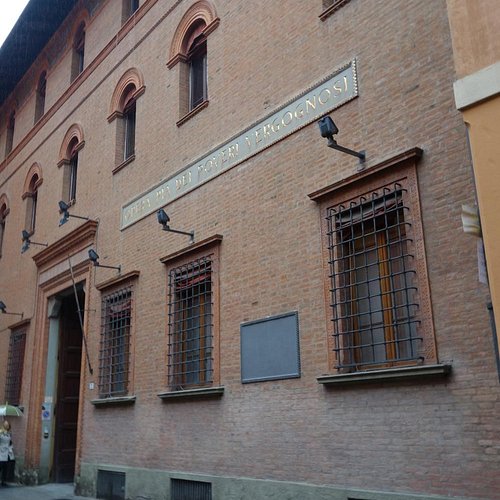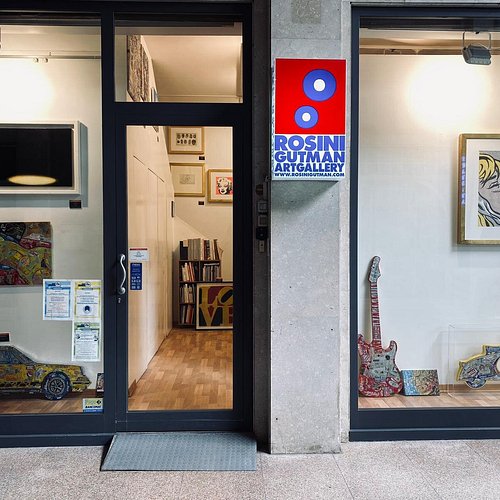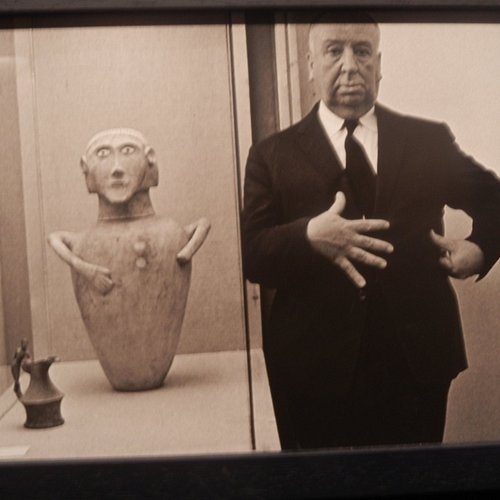What to do and see in Emilia-Romagna, Italy: The Best Art Galleries
Emilia-Romagna (pronounced [eˈmiːlja roˈmaɲɲa]; Emilian and Romagnol: Emélia-Rumâgna) is an administrative Region of Northeast Italy comprising the historical regions of Emilia and Romagna. Its capital is Bologna. It has an area of 22,446 km (8,666 sq mi), and about 4.4 million inhabitants.
Restaurants in Emilia-Romagna
1. Parco dell'Arte
Overall Ratings
5.0 based on 13 reviews
2. Galleria d'Arte Studio Santo Stefano
Overall Ratings
5.0 based on 2 reviews
Art-gallery situated not far from santo stefano square, where you can see paintngs, etchings, terracotta bas-reliefs about bologna by the sculptor ivan dimitrov, and also postcards, posters, prints and others about bologna taken from his works.
3. Wikiarte Auction House Art Gallery
Overall Ratings
5.0 based on 16 reviews
The Wikiarte Gallery of Deborah Petroni and Rubens Fogacci has two locations in the historic center of Bologna. The first in Galleria Falcone e Borsellino 2D, a few steps from Piazza Maggiore and behind the Lucio Dalla foundation, the second in Via San Felice 18 / A, 50 meters from the Palazzo Pallavicini museum, home to important international exhibitions.
4. Studio CaCO3
5. The Picture Gallery of Poveri Vergognosi
6. Mirabilia Arte & Cultura
Overall Ratings
5.0 based on 9 reviews
7. Rosini Gutman Art Gallery
Overall Ratings
5.0 based on 9 reviews
Rosini Gutman Gallery is an Art Brand founded in 1959. It promotes and speads Art as a cultural value. The aim is to connect people with our vision through projects, exhibitions and events. Our collection is full of art icons such as: A. Warhol, G. Balla, G. de Chirico, Man Ray, A. Burri, A. Modigliani, S. Kaufman, M. Tozzi, N. de Saint Phalle.
8. Bologna Fotografata. Tre Secoli di Sguardi
Overall Ratings
5.0 based on 10 reviews
9. Fondazione Massimo e Sonia Cirulli
Overall Ratings
5.0 based on 1 reviews
The Fondazione established in February 2015 by Massimo and Sonia Cirulli is built upon 3 decades of work and experience accumulated by the Cirulli Archive. The Fondazione’s goal is to promote, at a national and international level, the knowledge of twentieth-century Italian art and visual culture, from the early years of the country’s engagement with modernity to the postwar economic boom.
10. Palazzo dei Diamanti
Overall Ratings
4.5 based on 1,766 reviews
The Palazzo dei Diamanti is a venue belonging to the city of Ferrara where exhibitions of international importance are held, thereby contributing to the city’s reputation as a centre of art and culture. These exhibitions are organized jointly by Fondazione Ferrara Arte, Gallerie d'Arte Moderna e Contemporanea di Ferrara and the Settore Attivita Culturali of the Comune di Ferrara.
Reviewed By Brun066 - Florence, Italy
My appreciation for the "Palazzo dei Diamanti" comes from three main reasons. Firstly this palace, with its diamond point bosses (hence the name), is to be considered one of the most beautiful of the Italian Renaissance. Secondly, it can even be considered a symbol of Ferrara, which from this point of view could even overstretch the Estense Castle. I try to justify my statement; and I will devote most of my review to this goal. The palace is suitable to symbolize Ferrara not only and not so much for its intrinsic beauty, but because it reveals the way that the architect Biagio Rossetti followed, between 1492 and 1505, to create the so-called "Addizione Erculea" . This is the name of the operation by which Rossetti (on behalf of Ercole I d'Este, Duke of Ferrara) in fact doubled the size of once medieval Ferrara, creating new city north of the existing one, and organizing it with a gridiron of streets. The similarity of this gridiron with the orthogonal plan cities created in the Hellenic world on the model of Hippodamus by Miletus, or with the cities founded or re-founded by the Romans, or finally with the "Terre Nuove" (new settlements; cities founded from scratch) spread throughout Europe in the second part of the Middle Ages, must not deceive: according to scholars (and in particular to the historian Bruno Zevi, 1918-2000), it's only in the case of Ferrara that the city sees the orthogonal plan organized regardless of the needs of immediate expansion; so that the inhabitants of sixteenth century Ferrara will call it not "Terra Nuova", but "Aria Nuova" (new air), to indicate that the new city consists precisely of air, and not of buildings. The gridiron exists, the buildings will then come. To safeguard the cornerstones of its urban creation, however, and to prevent them from being distorted in the future, Rossetti "blocks" some fundamental intersections and squares, immediately edifying a few but strategic buildings. One of these (and the most illustrious) is Palazzo dei Diamanti, which is therefore established as the cornerstone of what Zevi calls "the first operation of modern urban planning in Europe". The third reason for my appreciation stems from the quality of the artistic exhibitions that have been held in the building since many years. Right now, the exhibition of the painter Giuseppe De Nittis is in progress (and I have just visited it), an Italian who lived mainly in Paris. In past years, I have been able to admire the exhibitions on Joan Mirò (2008), on Joseph Turner and Italy (2008-2009), on Jean Simeon Chardin (2010-2011), on Francisco de Zurbaràn (2013-2014). They were all excellent exhibitions, which honored the city of Ferrara.










